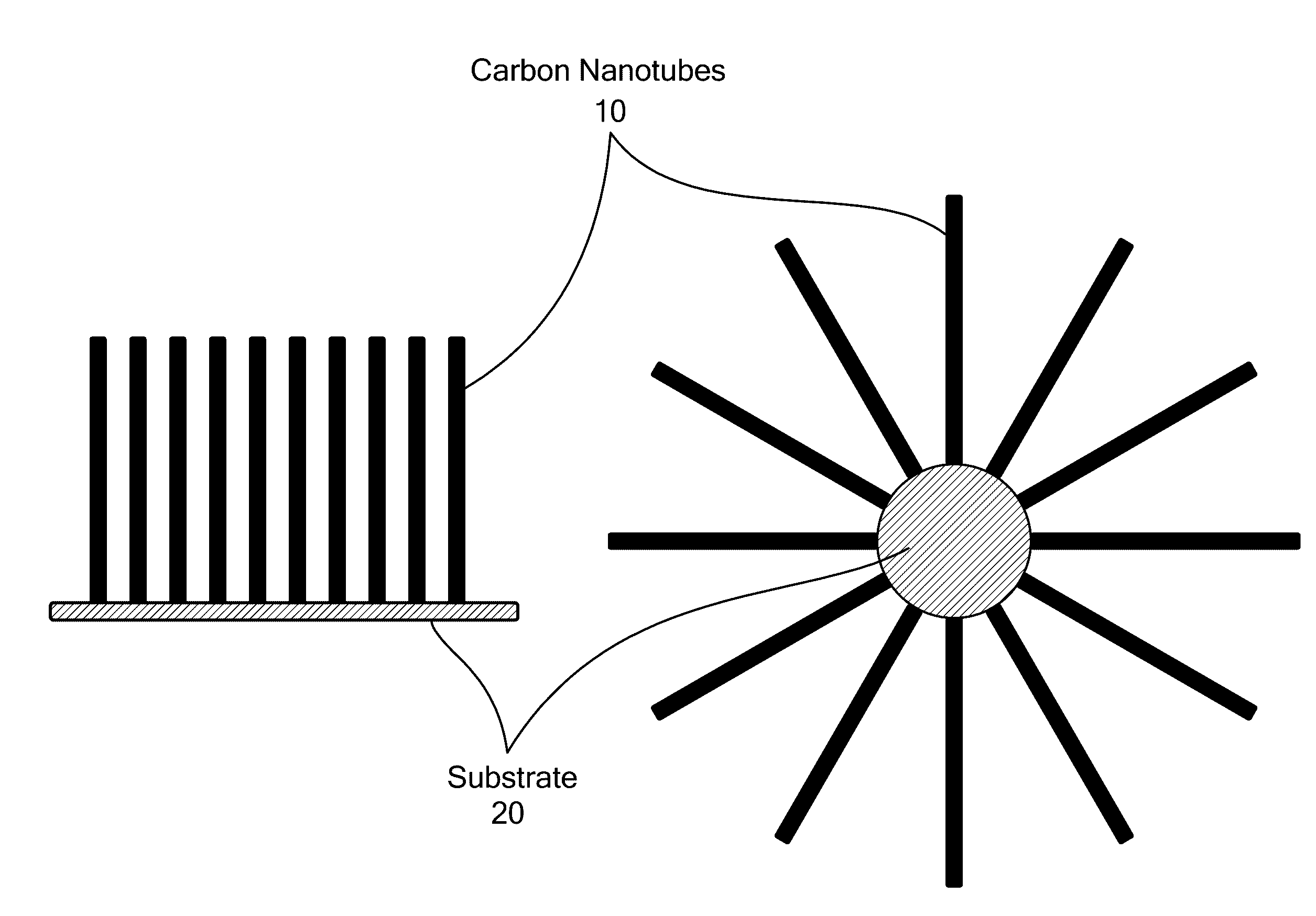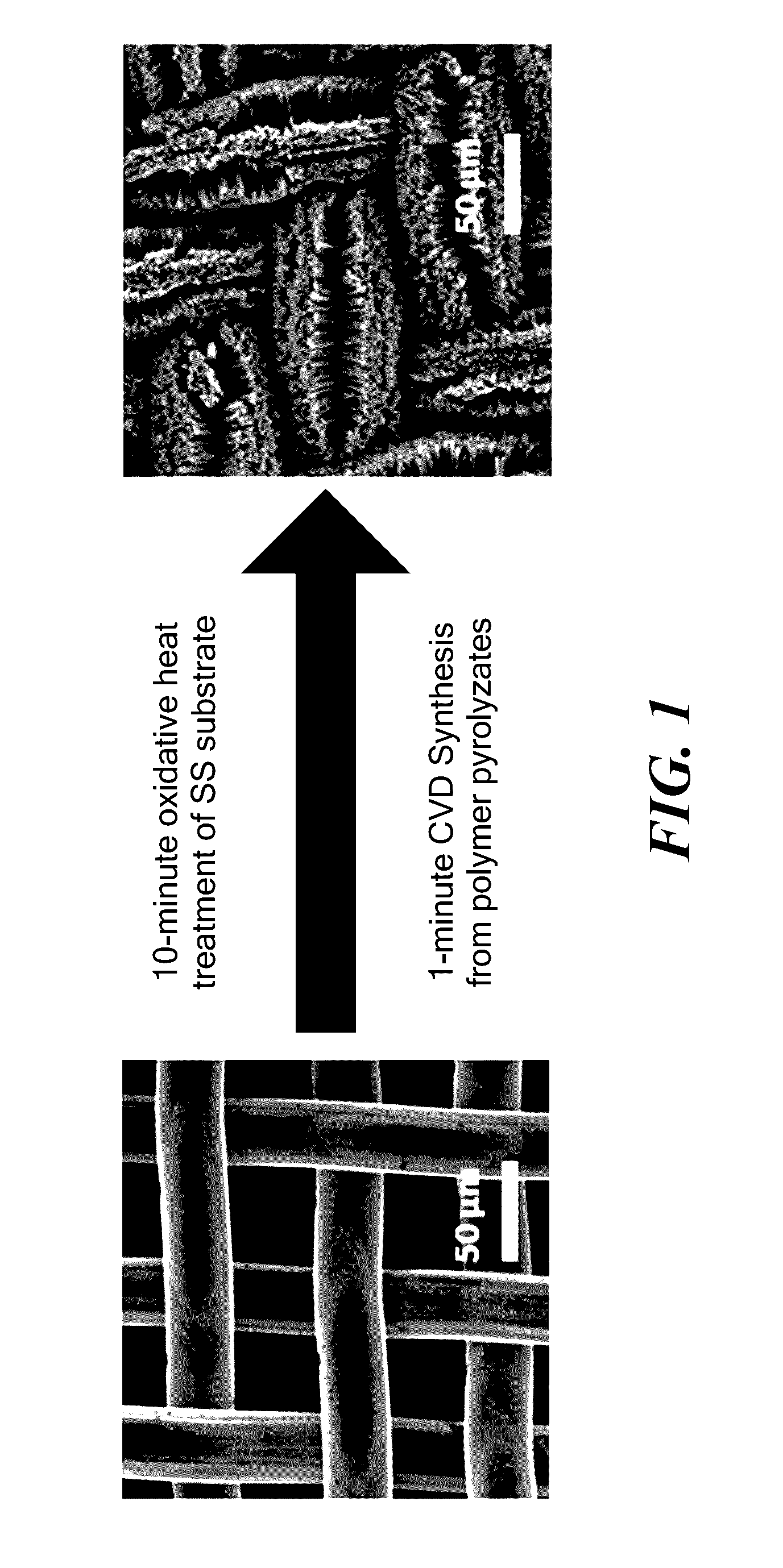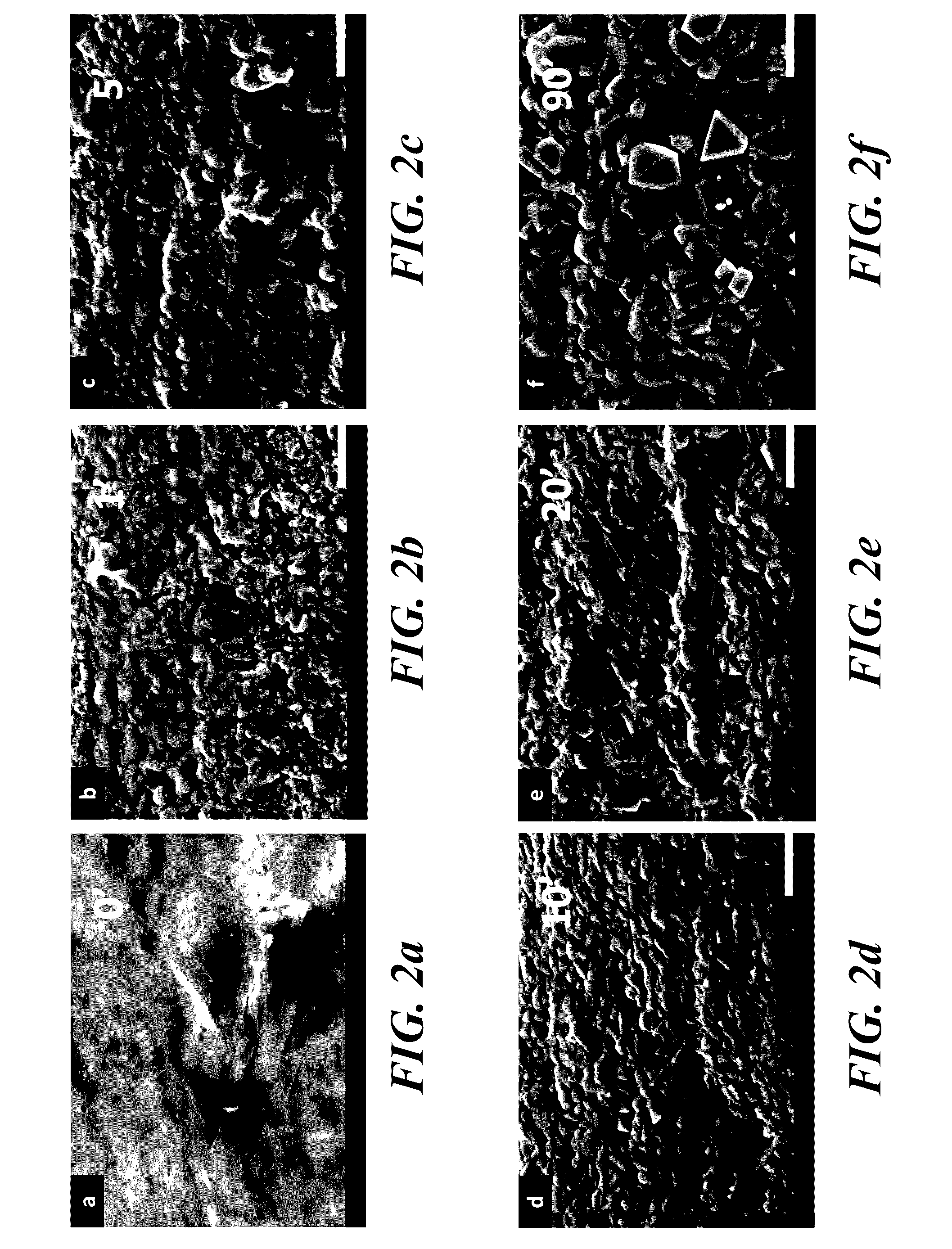Catalyst and Method for Synthesis of Carbon Nanomaterials
a carbon nanomaterial and catalyst technology, applied in the direction of catalyst activation/preparation, metal/metal-oxide/metal-hydroxide catalysts, physical/chemical process catalysts, etc., can solve the problems of metal grain particles growing to large sizes, ss does not readily react with gaseous hydrocarbon feedstock, etc., to promote the synthesis of carbon nanomaterials and increase surface roughness
- Summary
- Abstract
- Description
- Claims
- Application Information
AI Technical Summary
Benefits of technology
Problems solved by technology
Method used
Image
Examples
example 1
Catalyst Formation by Heat Treatment of Stainless Steel
[0043]Scanning electron microscopy (SEM) was performed using a Hitachi S-4800 electron microscope equipped with energy dispersive spectroscopy (EDS). SEM was used to reveal the surface morphology and elemental composition of the substrates, as well as of the synthesized CNTs. An accelerating voltage of 3 kV, a beam current of 10 μA, and a working distance of 8.2 mm were applied for SEM imaging, whereas an accelerating voltage of 30 kV, a beam current of 10 μA and a working distance of 15 mm were applied for EDS analysis.
[0044]Atomic force microscopy (AFM) was conducted using an Agilent 5500 instrument to investigate the substrate surface roughness down to the nanometer scale. AFM scanning was performed on the SS samples after oxidative heat treatment for 1, 5, 10, or 20 minutes. An untreated steel sample was also investigated as a control. The samples were cut into 1 cm by 1 cm small pieces and were immobilized on glass cover sl...
example 2
Effect of Heat Treatment on Surface Reactivity
[0048]An Autolab PGSTAT 30 potentiostat (Metrohm USA, formerly Brinkman Instruments) was used for cyclic voltammetry measurements in a 3.56% (by weight) sodium chloride solution, made by dissolving 34 g of reagent grade NaCl in 920 mL of distilled water. After different oxidative heat treatments, SS samples with dimensions of 8 mm×6.25 mm were exposed to the NaCl solution. Voltammetry was carried out at room temperature in a three-electrode cell. All potentials were measured with respect to a Ag / AgCl reference electrode (212 mV vs. SHE), and anodic currents are shown as positive. All the measurements were collected after stable open circuit potentials (Eocp) of the electrodes in the solution were achieved.
[0049]Potentiodynamic measurements showed that the cyclic voltammograms of all the heat treated SS meshes had similar shapes (FIG. 4), but all were distinguishable from cyclic voltammograms of the untreated SS mesh. Specifically, a peak...
example 3
Synthesis of Carbon Nanotubes
[0052]CNT synthesis experiments were conducted in a two-stage reactor (described in reference [8]), where feedstocks of solid post-consumer polymers (polyethylene, polystyrene, etc.) were pyrolytically gasified to supply gaseous hydrocarbons and hydrogen that are needed for the growth of the CNTs on pre-treated 316L SS mesh substrates / catalysts.
[0053]To achieve conversion of solid hydrocarbon fuels to CNTs, quantities of a solid feedstock, either polyethylene or polystyrene in pelletized form was first thermally pyrolyzed into a stream of gaseous decomposition products (pyrolyzates) inside a pyrolyzer furnace at 600˜800° C. Pyrolysis occurred in a nitrogen atmosphere with a flowrate of 1 standard liter per minute (slpm), which prevented the ignition and combustion of the pyrolyzates. The pyrolyzates then entered the second furnace where rolled up catalyst SS substrates were pre-inserted. Growth of CNTs occurred on the catalyst substrates at a furnace tem...
PUM
| Property | Measurement | Unit |
|---|---|---|
| temperature | aaaaa | aaaaa |
| temperature | aaaaa | aaaaa |
| surface roughness | aaaaa | aaaaa |
Abstract
Description
Claims
Application Information
 Login to View More
Login to View More - R&D
- Intellectual Property
- Life Sciences
- Materials
- Tech Scout
- Unparalleled Data Quality
- Higher Quality Content
- 60% Fewer Hallucinations
Browse by: Latest US Patents, China's latest patents, Technical Efficacy Thesaurus, Application Domain, Technology Topic, Popular Technical Reports.
© 2025 PatSnap. All rights reserved.Legal|Privacy policy|Modern Slavery Act Transparency Statement|Sitemap|About US| Contact US: help@patsnap.com



